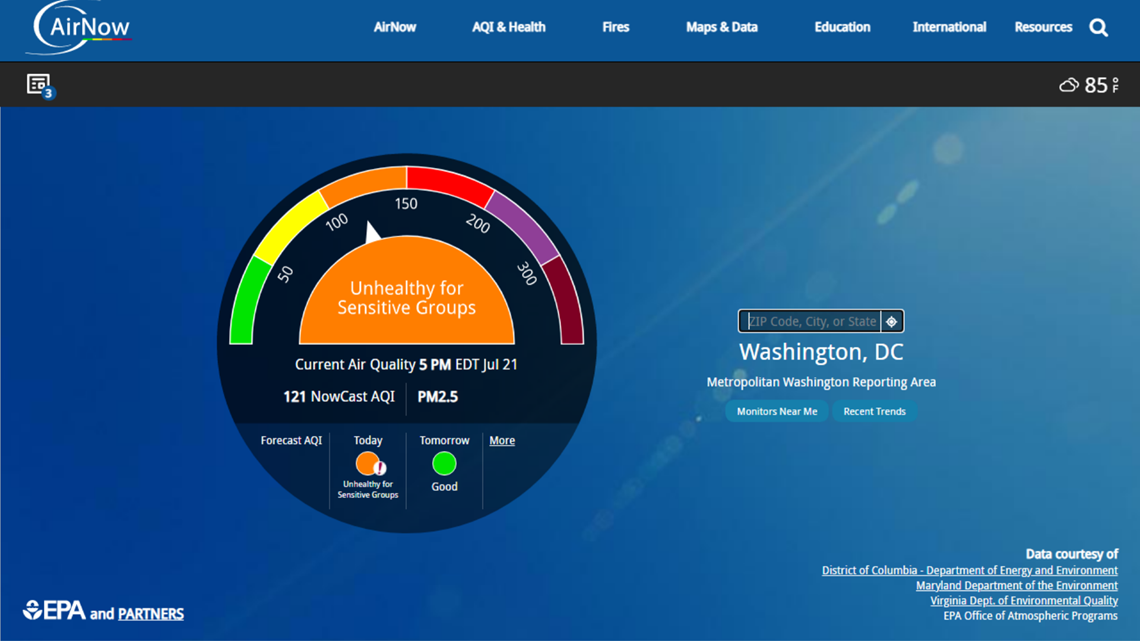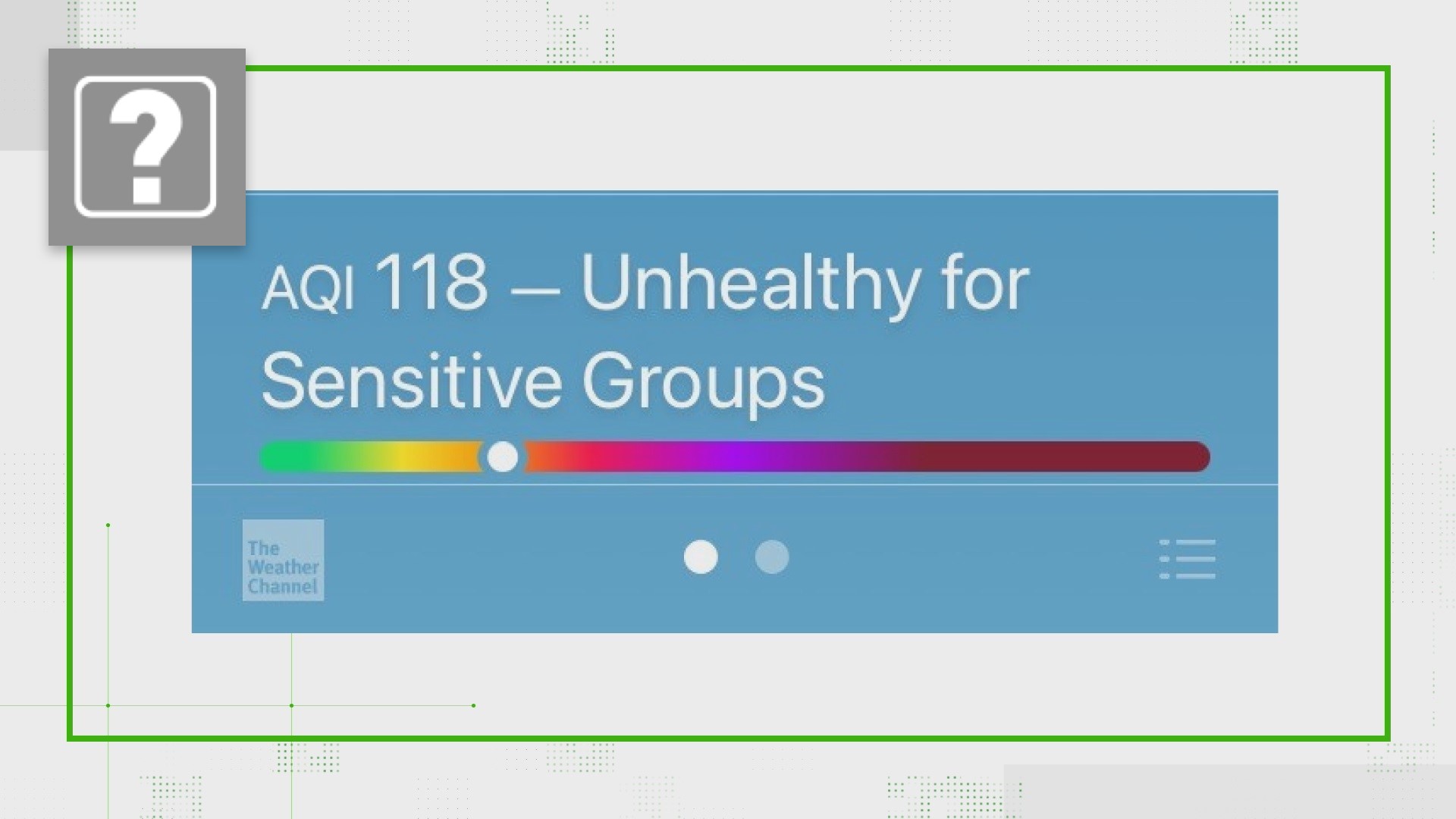WASHINGTON — You may have noticed it's a lot hazier outside along the East Coast, that's because smoke traveled all the way from the forest fires in Oregon to the east coast.
Perhaps you even got an alert about the air quality hitting a code orange, which is "unhealthy for sensitive groups."
Our Verify team sought to find out who exactly is most affected by this wave of air pollution.
THE QUESTION:
Who is part of “sensitive groups” and should they take extra precautions during a code orange?
OUR SOURCES:
- Dr. Panagis Galiatsatos- Assistant Professor and Physician of Pulmonary and Critical Care Medicine at Johns Hopkins University
- U.S. Environmental Protection Agency- website
- AirNow.gov
THE ANSWER:
Those with lung conditions, heart disease or are children are included in "sensitive groups," and they should take several precautions like limiting outdoor time.
WHAT WE FOUND:
Our sources say the umbrella term "sensitive groups" includes a bunch of at-risk individuals, like people with lung conditions, those with heart disease and children.
Dr. Panagis listed those with lung conditions like asthma, emphysema or chronic obstructive pulmonary disease (COPD), and heart conditions, like those with a history of a heart attack, heart failure or high blood pressure.
The EPA also includes adults 65-years-old and above and people with diabetes as part of "sensitive groups."
If you’re part of these groups, when the air quality hits orange you should take extra precautions.
Those groups should reduce their time outside and reduce the intensity of outdoor activities, the EPA said.
Dr. Galiatsatos says face masks can help too, and if you use an inhaler, it’s not a bad idea to use it before you leave the house. According to the Center for Disease Control (CDC), cloth face masks will not protect you against wildfire smoke but N95 and KN95 respirators can provide protection.
There's a neat air quality resource called AirNow.Gov; it's a website created by the EPA and supported by U.S. federal partners and agencies in Canada and Mexico.
You can use the tool to search current air conditions in your neighborhood by zip code, and monitor how it improves or worsens by the hour or by the day.


You can also use the website to compare different cities and counties within a state or within the U.S.
For instance in Washington, D.C., the air quality as of 5:22 p.m. was at 121, putting it in the orange range; however, it's anticipated to be back in the green by tomorrow.
Richmond, Virginia had an air quality index of 116, and Baltimore, Maryland had an API of 111, both at level orange.

